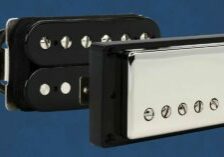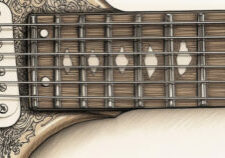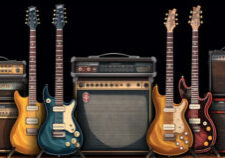Selling guitar gear on Reverb is like plugging into an amplifier and unleashing the power of your music equipment. It’s a platform where you can turn your unused or unwanted gear into cash, while also connecting with fellow musicians and enthusiasts who appreciate the value of quality instruments. That’s been one part of my Reverb experience that has been a pleasant surprise.
In this article, I will guide you through the process of selling guitar gear on Reverb, providing you with step-by-step instructions and insider tips to maximize your chances of success. From setting up your account and researching market values to photographing your gear for maximum appeal and communicating effectively with buyers, we’ll cover it all.
So get ready to fine-tune your listings and strike a chord with eager buyers on Reverb.com. Let’s dive in!
Key Takeaways
- High-quality photos and a detailed description are crucial for successful listings on Reverb.
- Pricing items appropriately and using competitive pricing strategies can help attract buyers.
- Enabling offers and responding to buyer questions can increase the chances of making a sale.
- Participating in site-wide sales and promotions on Reverb can boost order volume and attract more buyers.
Setting Up Your Reverb Account
Setting up your Reverb account is the first step to unleashing the potential of selling your guitar gear on this top marketplace for musicians and music enthusiasts alike. It’s a straightforward process that allows you to easily create listings, manage transactions, and track your sales.
To get started, simply visit the Reverb website and click on the ‘Sign Up’ button.
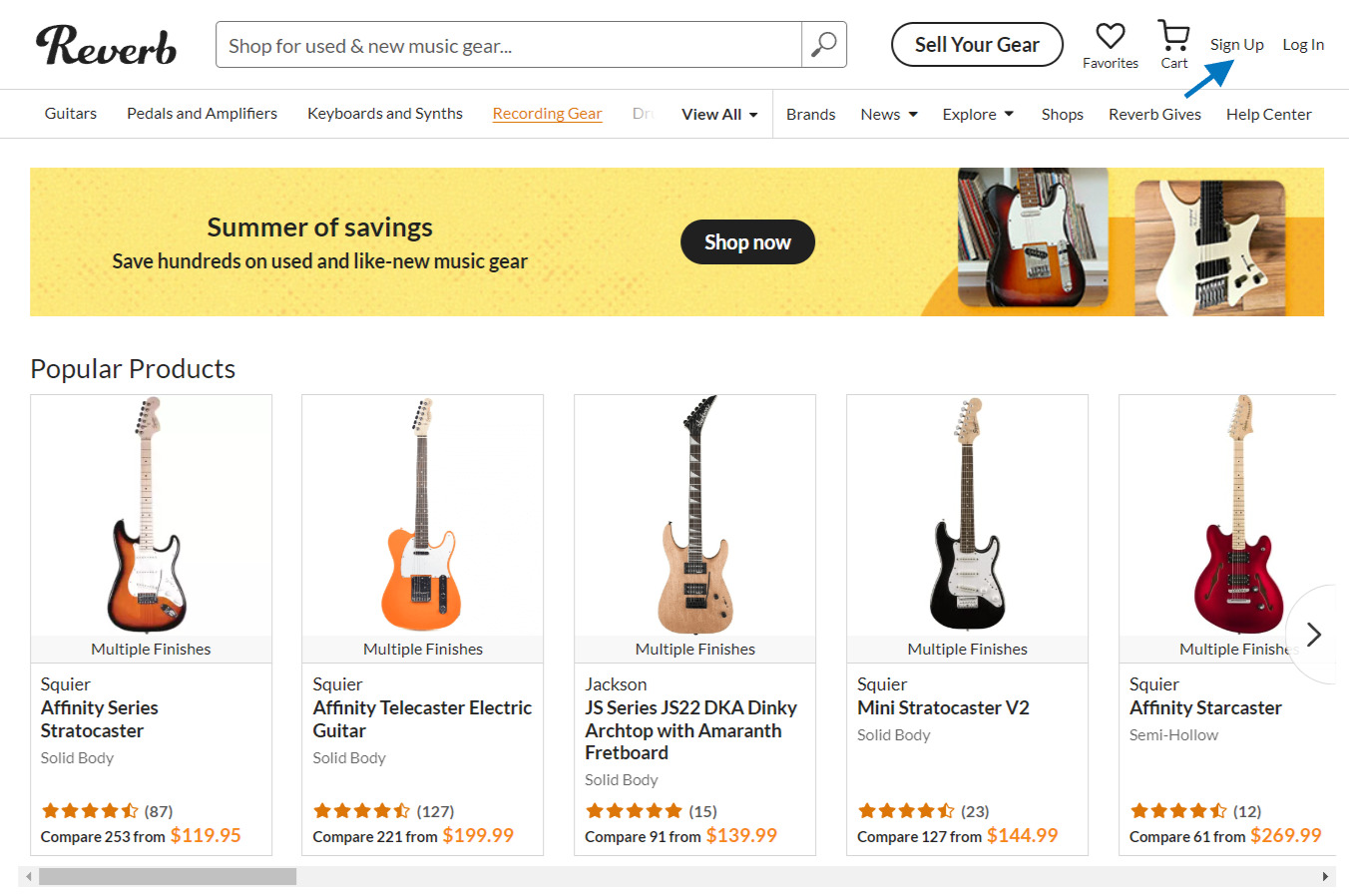
reverb signup
Once you’ve created an account, you can create listings for your guitar gear. Reverb provides simple instructions and assistance throughout the listing creation process, making it easy to showcase your items effectively.
You can search for the specific gear you want to sell, or if it’s not in their database, you can still create a listing by providing all the necessary details. We’ll get into the weeds on that in a minute.
Researching the Market Value of Your Gear
Before diving into selling your guitar gear, take a moment to explore the market value of your beloved musical treasures. Researching the market value is an important step to ensure you set a fair and competitive price for your gear on Reverb. It helps you understand the current demand and pricing trends for similar items, allowing you to make informed decisions.
Research Gear Currently For Sale
To research the market value of your gear, start by searching for the item. This will give you an idea of what similar items have sold for recently. Consider factors such as brand, condition, age, and any unique features or modifications.
After you search for the piece of gear you want to sell, sort price from low to high. Then, try to determine if the lowest priced gear is in worse condition than the item you want to sell. For example, you might see some effects pedals for sale for $50 but realize they are non-functioning, or they are badly scratched up. Keep looking at items that match the condition of the item you want to sell and write down a range.
Research Gear that was Sold on Reverb
Also, after looking at the current market prices of the same items, you can open up the filters and select “SOLD” Items. This will let you look at the same items previously sold on Reverb. This is actually a better representation of value.
After the search, you can use the filters button to filter through and select the sold listings option below.
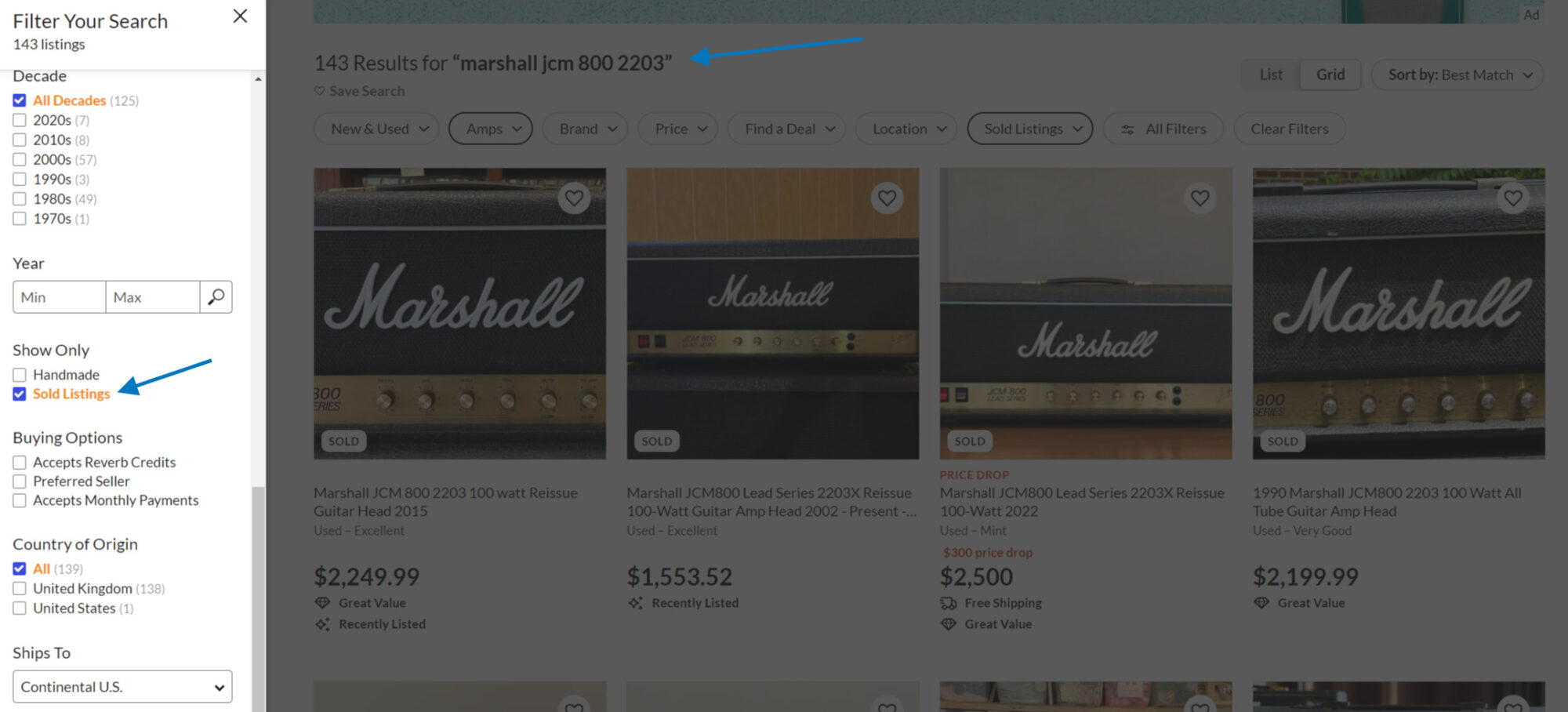
reverb filter sold listings
Research Gear on Other Platforms
Additionally, you can use other online platforms or forums dedicated to buying and selling music gear to gather further information about pricing. I’ll do this on expensive gear or rare vintage gear that didn’t have a lot of sales. These sources can provide valuable insights into what buyers are willing to pay for specific items.
If I’m selling gear worth more than $500, I usually check multiple sites. Here are some great places to check.
Preparing the Guitar & Gear
Before listing a guitar and other grear for sale on the Reverb platform, prep your gear for photos. This includes cleaning the guitar or gear before taking pictures to present it in the best possible light.
Good lighting is also important when capturing images of the guitar, as it helps showcase its features accurately.
Photographing Guitar Angles
When photographing the guitar, take pictures of every aspect. This includes
- Close-up of the front
- Full length of the front
- Close-up of the back
- Full-length of the back
- Close up of headstock front
- Close-up of headstock back
- Angle from over guitar in playing position
- Angle from under guitar while playing
- Angle from behind neck to body
- Angle from bottom
- Angle from side of neck to show fret ware
- Unique characteristics (like bridge or pickups)
- Close-up of Imperfections
You need to show anything wrong on a guitar or people will ship it back. Otherwise, you’ll get a bad rating and never be able to sell a guitar.
Yes, guitars get banged up and are meant to be played. Many people, like myself, are not looking for wall hangers. I would rather have a great playing guitar with nicks, dents and scratches then a perfect guitar if I can save money over new or mint condition guitars.
Writing an Effective Listing Description
Crafting a compelling listing description is essential for grabbing the attention of potential buyers and increasing the chances of selling your music equipment successfully on Reverb. When writing your listing description, try to provide as much detail as possible about your gear.
Be sure to include information such as the make, model, and category to improve search visibility. Use relevant keywords throughout your description to attract interested buyers. When I sell a guitar I list the following:
- Make
- Model
- Year
- Fret type
- Neck wood
- Body wood
- Pickup type
- Bridge type
- Tuner type
- Electronics features
To organize your description effectively, consider using bullet points and subheadings. This will make it easier for buyers to navigate through the information and find what they’re looking for. In addition to providing details about the item itself, don’t forget to mention its condition and any maintenance that has been done.
Tips for Awesome Reverb Listing Descriptions
Here is a checklist to consider when writing a description for selling any kind of guitar or musical gear on Reverb.
- Provide detailed information about make, model, and category
- Use relevant keywords throughout your description (people are using the search bar!)
- Organize your description with bullet points or subheadings
- Include high-quality photos of the item from different angles
- Specify the condition of the gear (mint, excellent, etc.)
- Mention any accessories or additional items included
- Highlight any unique features or selling points
- Clearly state the price and any applicable shipping or warranty information
- Be honest and transparent about any flaws or imperfections
- Provide accurate measurements or specifications if applicable
- Include any relevant certifications or product history
- Proofread for grammar and spelling errors before publishing
Choosing the Right Category and Subcategory
When creating your listing on Reverb, you’ll want to select the appropriate category and subcategory to ensure maximum visibility for potential buyers. Choosing the right category and subcategory is crucial because it helps buyers find your listing more easily when they’re searching for specific items.
Reverb offers a wide range of categories and subcategories to cater to different types of guitar gear. Whether you’re selling electric guitars, acoustic guitars, bass guitars, guitar amps, or guitar pedals, there’s a category and subcategory that’ll suit your gear perfectly.
To choose the right category and subcategory for your listing, start by considering the type of gear you’re selling. For example, if you’re selling an electric guitar, you would select ‘Electric Guitars’ as the main category. From there, you can further narrow down the options by selecting a subcategory such as ‘Solid Body’ or ‘Hollow Body.’
Don’t skip the categories as people use them to find gear. By choosing the most relevant category and subcategory for your listing, you increase its visibility among potential buyers who’re specifically looking for that type of gear. This improves your chances of making a sale quickly and efficiently.
Setting a Competitive Price
Let’s talk pricing strategy. Pricing your musical equipment competitively is crucial for attracting potential buyers and increasing your chances of successful sales on Reverb.
Generally what I find is that if there are a lot of the same items for sale, then pricing the lowest (assuming same condition comparables). This will help you sell fast. If I’m not in a hurry to sell, then I price it 10-15% higher than the lowest price.
If the gear I’m selling doesn’t have a lot of competition then I try to find an average price based on last sold items. There might be a number of 1980’s US Fender strats for sale, but not one with the this neck, sunburst finish, so I would price this guitar below based on average.
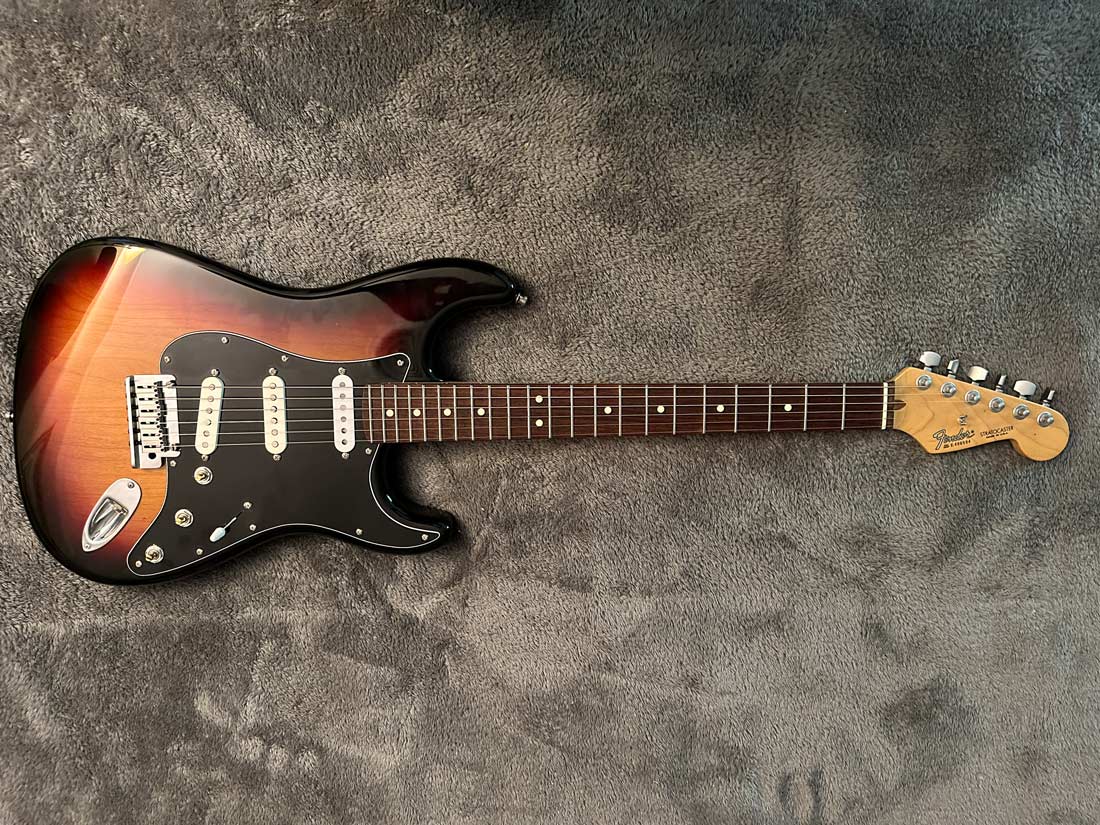
guitar sold on reverb photo quality
If you believe your equipment has really unique features, don’t be afraid to set a higher price. This is usually what people do to sell $3,000+ guitars or collectible gear. Just make sure to justify this price by providing detailed descriptions and highlighting any special attributes that set it apart.
Negotations, Sales, Bumps, and Direct Offers
Reverb allows you to enable offers on your listings, allowing buyers to make an offer below your listed price. You can then choose whether to accept, decline, or counter their offer. This feature allows for flexibility in pricing and can help attract more buyers.
When negotiating with potential buyers, being responsive and timely is important. Responding promptly shows that you’re engaged and interested in making a sale. It’s also essential to maintain clear communication throughout the negotiation process.
Remember that negotiation is a two-way street. While you want to achieve a fair price for your gear, it’s also important to consider the buyer’s perspective. Be open-minded and willing to compromise within reason.
Creating Sales
After you list your items, you can come back and offer a sale. This allows you to reduce the price to a specific percentage. Find the listing in your shop and hit the sale button.
Oftentimes, you can use the Reverb site-wide sale, which is fairly quick and usually 10-15%. But you can create a custom sale to change the dates or percentage.

sale reverb
How to Bump Your Listing
You can also take a percentage of your sale and apply it to a bump which will advertise your item on Reverb.com. For example, let’s say you were selling a guitar for $1000. You can set a bump rate of 5%. Reverb would calculate your ad spend at $50 and would more or less give you $50 worth of exposure in advertising in various areas of the site.
With a bump, more people will see your item which will lead to more sales. But here is the great part. You don’t have to pay anything up front and you don’t have to pay unless your item sells on Reverb.
I use this when I have a higher end items and they are somewhat rare or unique. It may not be a unique model, but maybe I’m the only one on Reverb selling a rare color or a specific vintage date. This is often better use of your funds than a sale.
Sending a Direct Offer
Another good way to sell your items is to send people a direct offer.
Reverb users can add your gear to their watch list. So you can send an offer to those people who put your gear on their watch list. They will get an email and know that this offer is only going to them and the handful of other people who have the item on their watchlist.
This works really well as it encourages people to make a quick decision before someone else buys the item. I send offers before I just lower prices when I have at least 5 watchers for an item.
Handling Shipping and Packaging
When it comes to shipping and packaging on Reverb.com, sellers have access to a variety of tools and resources to ensure that their items are securely packaged and delivered to buyers promptly.
Reverb.com’s Awesome Shipping Features
Here are some key features and tips for handling shipping and packaging:
- Shipping Cost Calculator: Reverb offers a tool that helps sellers determine shipping costs based on the dimensions and weight of their gear. This ensures accurate pricing when creating listings.
- Discounted Shipping Labels: Sellers can save up to 20% on shipping labels from USPS, UPS, and DHL through Reverb’s partnership. This helps reduce costs and streamline the shipping process.
- Packaging Tutorials: Reverb provides tutorials on how to properly package gear for safe shipping. These step-by-step guides help sellers ensure that their items arrive in the same condition as described in the listing.
- International Shipping & Local Pickup Options: Sellers have the flexibility to offer international shipping or local pickup options for buyers’ convenience. This expands their potential customer base and allows for more flexible transactions.
- Options to buy Guitar boxes: You need to do this before you sell the items but if you plan to sell guitars, you can get order the long boxes from Reverb.com, which are big enough to ship any guitar in a case.
Shipping Guitars with a Case
When it comes to proper shipping, you really need to use common sense and make sure you have the right packing material. I use a combination of small bubble wrap, large bubble wrap, paper, and lots of tape. I will wrap guitars in bubble wrap even inside the case. I don’t want that guitar to move at all. Just a quick bump can break a headstock. And I just like having that extra protection.
I usually wrap in small bubble wrap around the guitar and once around the case, then put some paper in the bottom of the box, then large bubble wrap, and then the case. I use paper to fill the void on each side then large bobble wrap around the top. I’m guessing I use $10 of bubble wrap per guitar. Of course, I save bubble wrap from shipments I get, but often I have to purchase rolls and I just add this to shipping fees.
I always do the shake test and make sure the guitar doesn’t move. I also right FRAGILE all over the outside of the box. I tape all the seams.
Shipping Guitars without a Case
I also ship guitars without cases. When I do that, I like using a bigger box and I only use bubble wrap. No paper. I’ll use about $15 worth of bubble wrap per guitar.
Won’t these guitars get damaged?
Actually, its not as bad as you might think. I like to ship guitars with cases as it will certainly give added protection. If I’m selling a guitar for more than $1000, I will actually acquire a case and include that cost in my asking price. When I sell cheap guitars, I usually ship them without a case.
Despite what you read on guitar forums and Reddit, I’ve never had a single guitar damaged when sent without a case. I’ve shipped about 40 guitars without boxes in the last 3 years. But I also have a good friend who owns a guitar store, and he ships guitars without cases and reports the same thing.
When I ship guitars without a case, I like to use a bigger box. I wrap the guitar in small bubble wrap with extra wrap around the headstock. I don’t use paper to fill void. I use bubble wrap and make sure the guitar is positioned in the center of the box. I always lightly shake the box. The guitar should not move if packaged this way.
This keeps the guitar safe if the box is thrown. If a guitar is loose inside the box, it will hit something and can crack the neck or headstock. Good packing will usually avoid most mishandling with the exception of spearing. This is when another box, pole, jagged item, or forklift blade punctures the box. When this happens, your guitar will get damaged, even if it’s shipped in a case.
Communicating with Buyers
To effectively connect with potential buyers on Reverb, it’s crucial that you prioritize open and honest communication throughout the selling process. When a buyer shows interest in your guitar gear, you will sell more gear when you respond promptly and professionally. Answer any questions they may have about the item, its condition, or its features. Providing detailed and accurate information will help build trust and increase the likelihood of making a sale.
Also, don’t forget about after-sales communication. Follow up with your buyers after they receive their purchase to ensure their satisfaction. If any issues arise, quickly address them.
By prioritizing clear and consistent communication with potential buyers on Reverb, you’ll enhance your chances of successfully selling your guitar gear while building positive relationships along the way. This will often lead to really good reviews that are highly beneficial in improving your sales.
Handling Returns and Refunds
Handling returns and refunds is an essential aspect of the selling process on Reverb, ensuring a smooth and trustworthy transaction for both buyers and sellers.
Reverb recommends setting a one-week return window for used gear and a two-week window for new gear. This gives buyers enough time to thoroughly test the item and decide if it meets their expectations. If a buyer wants to initiate a return, I normally approve it. If people don’t like the gear I sell and want to send it back, I just put it back up for sale. It’s a slight hassle to restock items and resell them, but it doesn’t happen often.
If the buyer claims damage then I have them send it back. Once the item is returned in its original condition, I’ll issue the refund promptly according to my stated return policy. This helps maintain trust with buyers and ensures that they have confidence in purchasing from me again in the future.
If the buyer shows me a photo of damage I didn’t see, I will refund it without requiring them to send the item back. Again, this is very rare. Sometimes you just have to eat the cost and realize this is the cost of selling items online.
Note: This is why you want a lot of photos of the item at all angles. This way if the buyer returns the item with new damage, you have proof of original selling condition in the images.
Frequently Asked Questions About Selling on Reverb.com
What are some tips for optimizing your Reverb listings for search engine visibility?
To optimize your Reverb listings for search engine visibility, it’s important to include relevant keywords in the title and description. Providing detailed descriptions with bullet points and subheadings can also help improve visibility. Think about all the different ways to say things. Pedals, effects pedals, multi-effect pedals. On a multi-effect pedal I’ll even list reverb, delay, modulation, etc because I want anyone searching for those effects to find them. Additionally, fill out all the categories in the listing area including the year, make and model of your gear.
What are some strategies for managing the shipping of guitar gear sold on Reverb?
To effectively manage the shipping and packaging of guitar gear sold on Reverb, I suggest using their shipping cost tool and taking advantage of their discounted shipping labels.
What is the best to learn how to pack a guitar?
Reverb has tutorials, but there are some great videos on YouTube. Check out Trogly’s video. He’s constantly shipping very expensive guitars. Here’s a video on shipping a guitar without a case. Here’s StewMac’s video guide to properly packing a guitar.
What are some additional seller tools and resources provided by Reverb to enhance the selling experience?
Some additional seller tools and resources provided by Reverb to enhance the selling experience include a seller portal for tracking views and transactions, buyer protection and custom return policies, and international shipping options.
How much does Reverb charge for their bump option?
The cost of Reverb’s default bump option is set at 4.5% of sales price. You can choose to spend 0.5% – 30% of the price of your item for additional exposure.
Can I sell my guitar internationally on Reverb?
Yes you can. However, you need to aware of how this will impact shipping costs and customs rules. For example, there are some items found on guitars, like rosewood, that are regulated and require a special license in certain countries. I’m from the US and the market is so strong that I choose not ship internationally. For more information, see Reverb’s International Shipping Guide.
What are the fees to sell an item on reverb?
Reverb charges a 5% selling fee as well as a 3.19% + $0.49 payment processing fee for each sale made via Reverb Payments. Reverb Preferred Sellers get a reduced 2.99% + $0.49 payment processing fee, but Reverb is not currently accepting new sellers to this program.
Selling on Reverb.com
Selling guitar gear on Reverb can be a seamless and profitable experience. By following the simple instructions and utilizing the tools provided by the platform, sellers can effectively list their items and attract buyers.
One interesting statistic to note is that Reverb averages 13 million hits over 6 months, indicating a large user base and potential customer pool for sellers. So you will sell more guitar gear on Reverb than any other platform.
I sell guitar gear on Facebook Marketplace, Craigslist, eBay and Reverb. They all have their pros and cons. Facebook and Craigslist are free, but you deal with a lot of lowball offers and spam. They are still good platforms for larger items like guitars, combo amps and cabinets. They are also fantastic platforms for trading.
I prefer to sell items on Reverb or ebay.com. The fees are lower and I sell a lot more. It’s much better to sell guitars and amps on Reverb over eBay. Common items like speakers and pedals can still do well on eBay. Sometimes if I notice a lot of the same gear is for sale at a really low price on Reverb, I’ll list the item on eBay instead.
This article should give you a nice well-rounded view of selling on Reverb. If you have questions, feel free to contact me and I’ll do what I can to help.
Here is my Reverb store for reference: RZ’s Shop on Reverb


